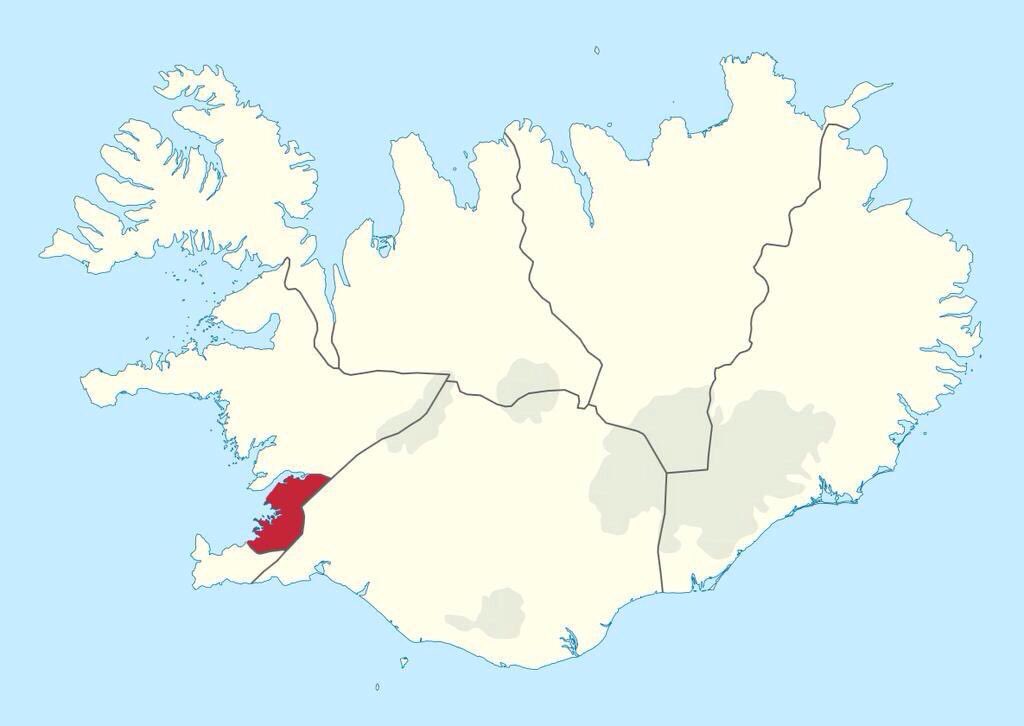Map by NordNordWest/TUBS / Wikimedia Commons
When you look at a map of Iceland, you might expect people to be scattered across this island nation that’s roughly the size of Kentucky.
But here’s the fascinating reality: nearly two-thirds of all Icelanders live in that small red area in the southwest corner. We’re talking about the Greater Reykjavík area, known locally as Höfuðborgarsvæðið (Capital Region), home to approximately 233,000 of Iceland’s 380,000 residents.
The Geography That Shapes a Nation
Iceland sits just below the Arctic Circle, and while the entire country experiences challenging weather, not all regions are created equal.
The southwestern corner enjoys relatively milder temperatures thanks to the warming effects of the Gulf Stream. Winter temperatures here hover around freezing rather than plunging to the bitter extremes found in the north and interior highlands.
The land itself plays a crucial role, too. Much of Iceland’s interior is an uninhabitable volcanic wasteland of lava fields and glaciers. The habitable zones cling to coastal areas and lowlands, with the southwest offering the largest stretch of accessible, relatively flat terrain suitable for building communities.
History and Economics at Play
Reykjavík became Iceland’s first permanent settlement in 874 AD, and its natural harbor made it the obvious choice for a trading hub. As Iceland developed, this advantage only grew stronger.
Today, the capital region contains the country’s main port, international airport, and virtually all major industries and services.
Jobs concentrate here in enormous numbers. If you’re an Icelandic professional seeking opportunities in tech, finance, education, or healthcare, your options outside Reykjavík shrink dramatically. The economic gravity is simply too strong to resist.
The Modern Urban Pull
Young Icelanders increasingly migrate from rural areas to the capital for university education and career opportunities. Once there, many never return to their hometowns.
This creates a self-reinforcing cycle where services and amenities concentrate further in the capital area, making it even more attractive to new residents.
The cultural draw matters, too. Reykjavík offers museums, restaurants, nightlife, and a vibrant arts scene that smaller towns cannot match.
For a small island nation, having one major urban center where things happen makes perfect sense.
The Unique Challenge
This concentration creates interesting dynamics. Iceland must balance infrastructure investment between serving the majority in one area while supporting scattered communities across vast distances.
Rural towns struggle with depopulation while Reykjavík grapples with housing shortages and rising costs.
Yet this arrangement also brings efficiency. Concentrated populations make it easier to provide services, public transportation, and utilities. For a country with fewer people than Wichita, Kansas spread across an area the size of Kentucky, clustering makes practical sense.
Looking Forward
As remote work becomes more feasible, some Icelanders are reconsidering the necessity of capital living. Still, the fundamental geographic and economic realities that created this concentration remain unchanged. For the foreseeable future, that small red corner will continue to be where Iceland’s story unfolds most intensely.
Help us out by sharing this map:
